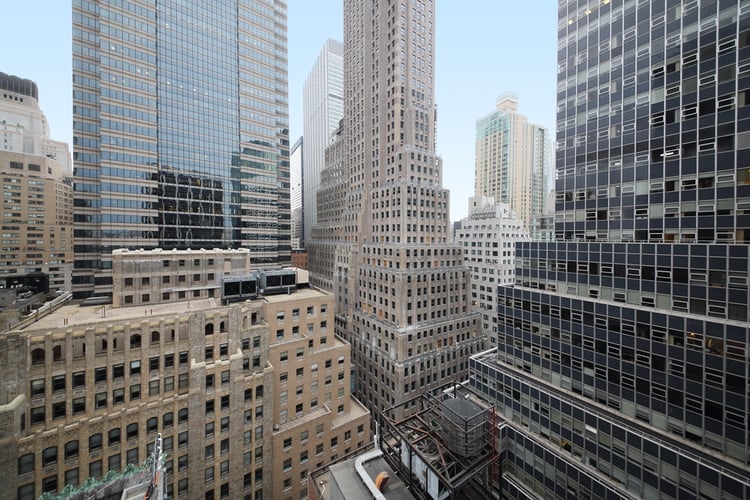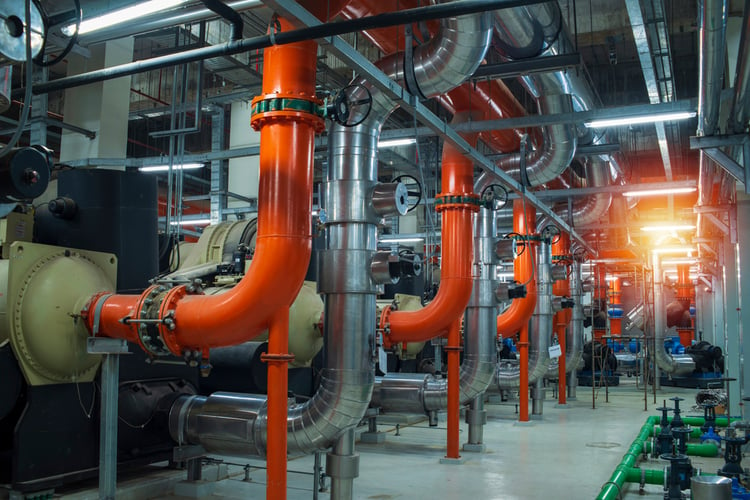How the Empire State Building Cut Its Emissions by 54%

The Empire State Building recently completed a deep energy retrofit, reducing its greenhouse gas emissions by 54%. This has been the result of more than a decade of energy upgrades: between 2007 and 2019, the iconic building reduced its emissions from 34,171 to 15,640 metric tons of CO2-equivalent.
Thanks to the deep retrofit, the Empire State Building now meets Local Law 97 of 2019, which establishes emission limits for properties over 25,000 sq.ft. The law comes into effect in 2024, and building owners must submit their first report by May 1, 2025. Building emissions are calculated annually, and there is a penalty of $268 per metric ton of CO2-eq over the limit.
Find out how to reduce your utility bills and emissions with a professional energy audit.
NYSERDA published a highly detailed case study about the Empire State Building energy retrofit, which provides valuable insights for other building owners, and the project was also covered in a CBC article. As part of the effort to become carbon neutral by 2030, the Empire State Realty Trust (ESRT) also upgraded four other properties in their portfolio: 250 W 57th Street, 1350 Broadway, 1359 Broadway, and 1333 Broadway.
Window Insulation with Inert Gases

A high-performance building envelope saves energy all year long, reducing air conditioning costs during summer and space heating costs during winter. The Empire State Building has a total of 6,514 double-pane windows, and all were upgraded with an insulating layer. The insulation layer is composed of mylar film and inert gases (argon and krypton).
Double-pane windows were removed from their frames and cleaned, a mylar film was added between the glass panels, and insulation was improved further by injecting argon and krypton. The window upgrade used 96% of the existing glass and window frames, minimizing the amount of waste coming out of the Empire State Building. To simplify the project, a complete window factory was set up on the 5th floor.
Elevators with Regenerative Braking
All 68 elevators in the Empire State Building are now equipped with regenerative braking systems, similar to those used by electric vehicles. These brakes can generate electricity whenever an elevator is descending, and also when ascending elevators stop. In other words, part of the electricity consumed by elevators can be recovered and used by other appliances.
Chiller Plant Retrofit

Air conditioning is the top electricity expense in most commercial buildings, and this applies for the Empire State Building: a chiller plant is used to cool more than 3.2 million square feet. The chillers were retrofitted as part of the building upgrade, and they have been equipped with an automatic control system to achieve even higher efficiency.
Empire State Building: Energy Consumption Profile
According to the case study published by NYSERDA, the Empire State Building was using 244,011 million BTU per year as of 2019, representing $8,512,325 in annual energy costs. This energy consumption comes with a carbon footprint of 15,640 tCO2-eq, which is below the 2024 limit: 24,878 tCO2-eq per year based on the building floor area.
With the emissions level before the retrofit (34,171 tCO2-eq), the Empire State Building would have exceeded the 2024 limit by 9,293 tCO2-eq, leading to a hefty penalty of $2,490,524. Thanks to the deep energy retrofit, the ESRT will be saving millions of dollars when LL97 comes into effect.
However, LL97 introduces a much lower emissions limit starting from 2030, and the Empire State Building must cut emissions below 13,029 tCO2-eq to comply. This is equivalent to an additional emissions cut of nearly 17%.
- At the current penalty rate of $268/year, the building would get a fine of nearly $700,000 per year starting from 2031.
- However, the ESRT has determined that the Empire State Building can cut emissions below the 2030 limit with an investment of around $21.7 million.
- The estimated payback period is only 4.25 years thanks to energy cost savings, maintenance savings, and incentives.
The building sector accounts for 37% of global emissions according to the UN. However, buildings produce 70% of emissions in the case of NYC, according to the Urban Green Council. Deep energy retrofits can not only reduce power and gas bills in commercial buildings, but also their carbon footprint.
A professional energy audit is strongly recommended as the starting point, to identify the measures that yield the highest energy savings and emission cuts per dollar invested.

Michael Tobias
Michael Tobias, the Founding Principal of NY Engineers, currently leads a team of 150+ MEP/FP engineers and has led over 4,000 projects in the US
Join 15,000+ Fellow Architects and Contractors
Get expert engineering tips straight to your inbox. Subscribe to the NY Engineers Blog below.

